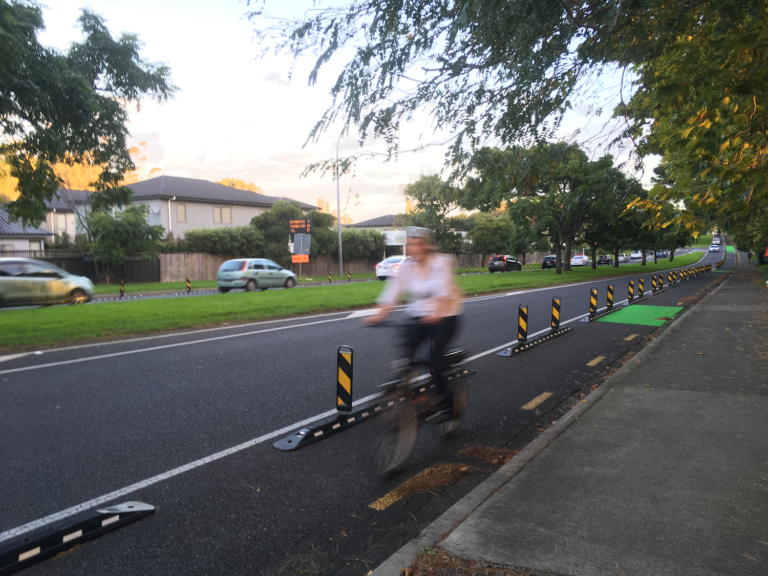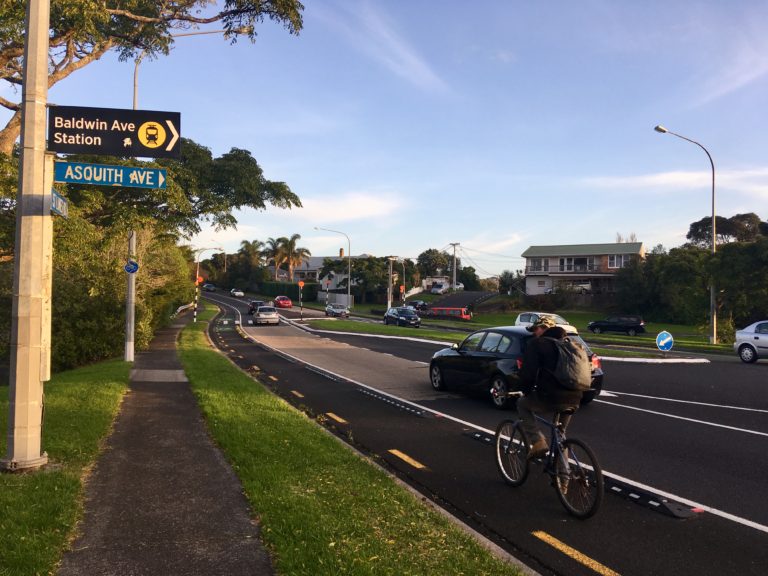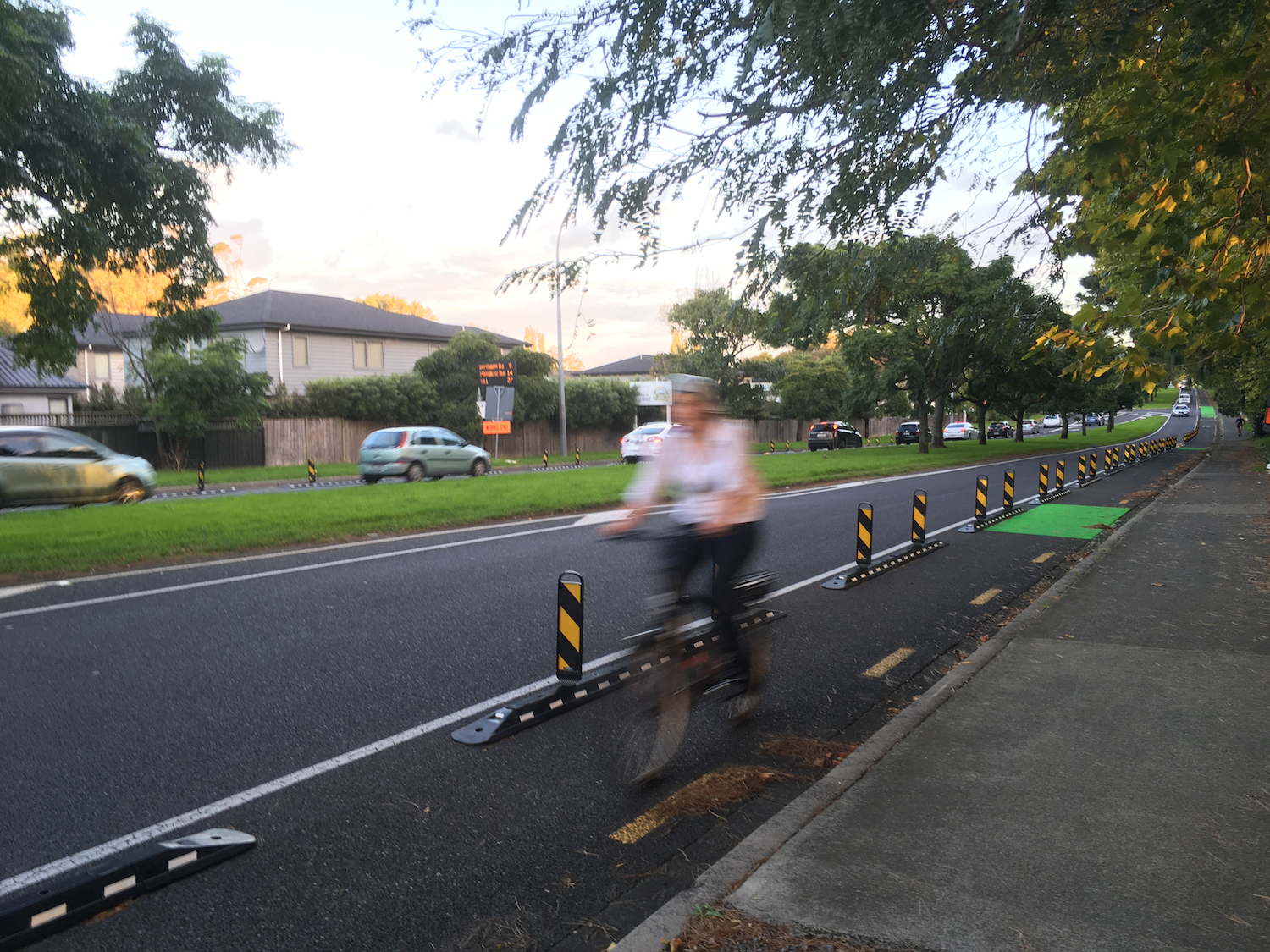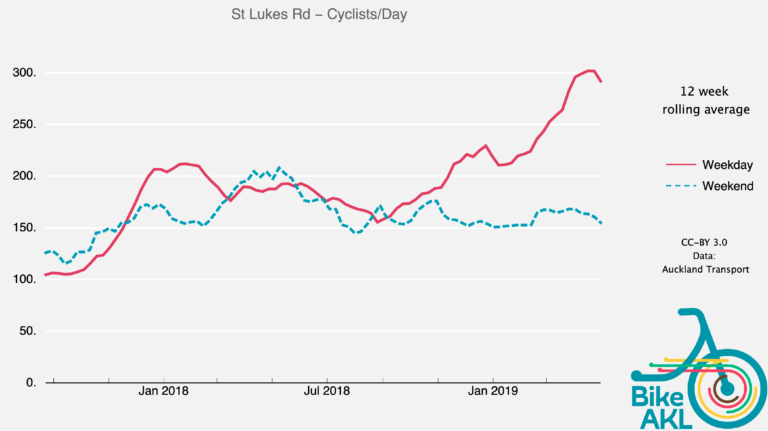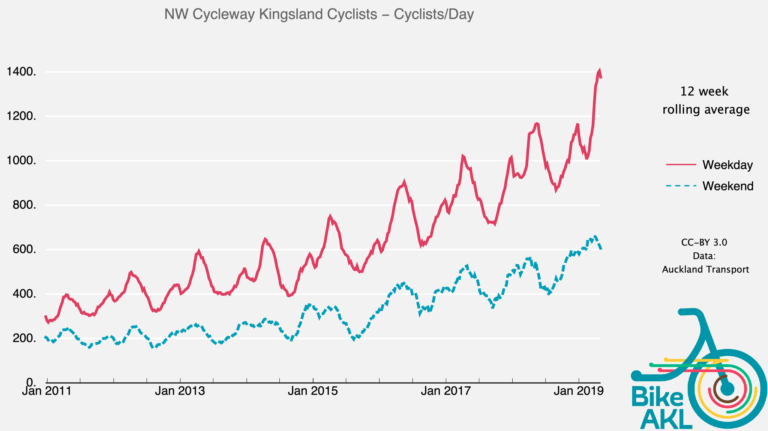Auckland Transport has recently opened the door to discussing ‘tactical’ upgrades – quick and affordable fixes to instantly improve road safety. Which is good, because we have some ideas!
For example, you’ll have noticed that as double-decker buses move around the city, shop verandahs and trees have been protected using simple hit-sticks and bumpers.
Call us crazy, but we happen to think people on bikes are just as deserving of quick-fix safety measures as trees and verandahs.
Of course, raised and/or fully separated bikeways remain the Holy Grail: protected and connected bike lanes save lives – not just for people on bikes – and are a key part of any respectable modern urban transportation strategy.
But temporary elements like rubber bumpers and plastic uprights do provide a modicum of visible and physical protection that’s far superior to mere painted lines on the road. And painted lines definitely no longer cut it: a recent study suggests that drivers make closer passes in the presence of paint-only lanes; and the recent viral ‘Red Cup Project‘ vividly demonstrated the gruesome insufficiency of painted lanes.
So, dear readers: can you help us make a list of existing painted bike lanes* around Auckland that would benefit from additional pop-up protection? NOTE: We know there are heaps of places that don’t even have paint-only lanes, and certainly need them! The reason our call for action focuses on ‘resolved’ bike lanes (to use the formal term for existing infrastructure) is because there’s no official/ legal impediment to adding protective measures (beyond budget, logistics, and time).
We’re sure you have a few in mind! We’d even love to put them on a map, and are talking to our friends at Generation Zero about that. Also, feel free to point out any existing tactical bike lane protection that’s in need of refreshing, or other opportunities you perceive.
Is it this bit? I photoshopped some bollards some time ago pic.twitter.com/dUufMrQP7A
— Su Yin Khoo (@ksuyin) June 7, 2019
Hey @BikeAKL crew who use Rosebank Road. There’s a tonne of gravel in the cycling strip in the spot below. Watch out – I nailed myself (no thanks to giant truck that past me too close at speed). ? pic.twitter.com/D5eKc2A310
— Liz Allen (@lizallen___) June 6, 2019
https://twitter.com/smirklesmirkle/status/827431581874679808?s=20
It’s true that hit sticks designed for temporary use can start to look tatty or sad if they’re in place for a long time waiting for a street upgrade, or are regularly run over and need replacing (which kind of demonstrates the point, when you think about it…).
We certainly understand this perspective, and trust us, we’d much rather have quality permanent treatments. But given the slow pace of delivery of cycleways (currently struggling to reach even 10km a year, even amidst a climate crisis!), we’d argue that tactical fixes are a vital, life-saving interim approach, needed everywhere possible, now.
We’d also point to examples like Great North Road, where interim protection for trees has been in place for a while now, and will remain so until this road is made over, a project that’s been delayed and is still at least a year away from even starting. If trees can benefit from perma-temp treatment, surely so can we?
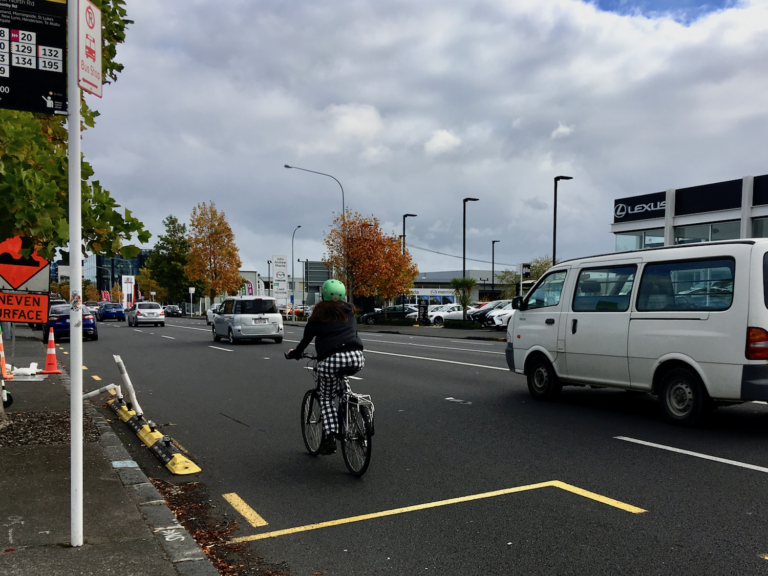
Because you know what else starts to look sad when it’s been in place for years, waiting for a street upgrade?
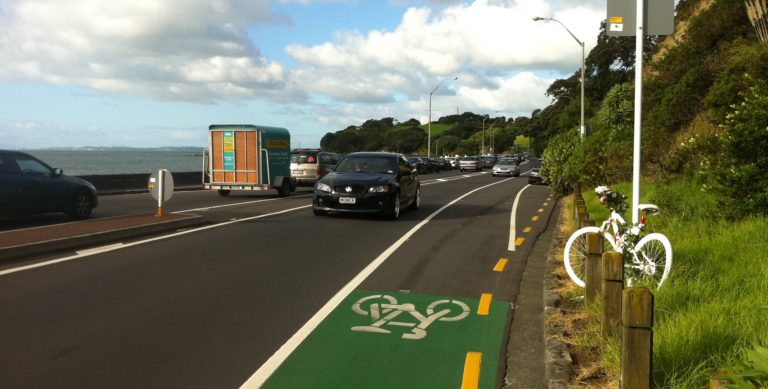
Maybe it would help if we plumped for monochrome versions of the affordable separators, with cute names like ‘armadillos’ and ‘wand-orcas’?
https://twitter.com/DanielRThomas24/status/1137601706009812992
The main point, though, is that safety is now Auckland Transport’s stated #1 priority. And Local Boards each have a significant Community Safety Fund in addition to their Transport Capital Fund, with which to make quick local fixes that make active modes (walking, cycling) safer and more appealing.
Upgrading streets for active mode safety whenever maintenance or renewal happens is another money-saving and life-saving approach that we’d love to see bedded in, once the current contracts are up for renewal (within a year or two).
Interestingly, AT already has at least one tactical fix success story to trumpet to the skies.
In April 2017, using a minor cycling safety improvement fund, it added temporary dividers to the pre-existing painted lanes on St Luke’s Road, with the backing of the Local Board. In the two years since, daily bike traffic has doubled… and then tripled!
Of course, that 200% rise is off a small base – which is hardly surprising, given that the bike lanes peter out into nothing at the railway bridge. Even so, note how the sudden recent growth on St Luke’s Road is almost exclusively amongst weekday traffic, i.e. commuters and school kids. Many of them likely use this safe and direct link to connect to the Northwestern Cycleway, which is Auckland’s fastest growing bike route.
In other words, a simple tactical safety fix – even a short one that’s disconnected at one end from any other cycling infrastructure at all – is demonstrably helping AT achieve its mandate to give people transport choice, lift cycling numbers, and is proving the network effect on top of that.
It’s almost as if giving people the occasional moment of even basic security from (and greater visibility to) passing motorists unlocks a whole lot of previously suppressed bike riding.
If you build it – even in a low-key, temporary sort of way – they will come.
So tell us: where else would work?
